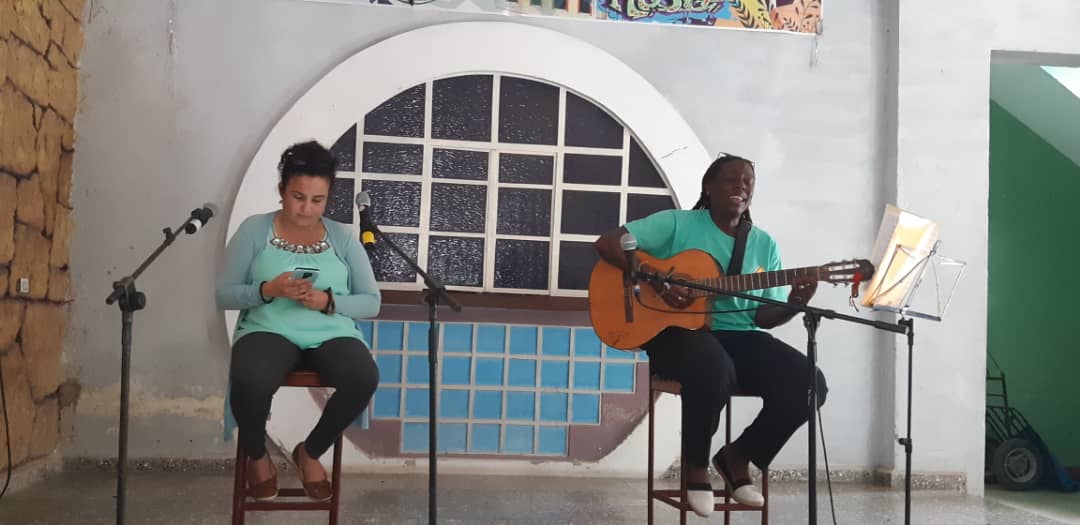
In Havana, where I lived until recently, I rarely saw promotions or the culture of artistic clubs. The ones I have seen have been scarce and sporadic.
Las Tunas, Cuba.- Many of them lasted only a few months. When my writer friend Yuslenis Molina included me in a WhatsApp group, created to inform various artists of the work being done in the province of Las Tunas, almost every day I learned about a new club, a concert, a literary workshop, an exhibition... Imagine the level of fascination with which I came to the Balcón de Oriente (Cuban Eastern Balcony) just to appreciate it with my own eyes.
Here I have attended the spaces: Los pasos en la hierba, by Yuslenis Molina, (literature); Del sueño a la poesía, by Elvira Skourtis, (music); Café literario Plaza de Armas, by Yury García Fatela, (literature); Nido de cuervos, by Amaury del Río, (music); Luna creciente, by Jesús Ricardo Pérez Cecilia, (music); Sinestesia, by Eduardo Rosell, (literature); Cuarto corazón, by Freddy Laffita, (music); Siempre que hay trova escampa, by Iraida Williams Eugellés, (music); Hojas sueltas, by Armando López Carralero, (literature). All of the above are based at the Asociación Hermanos Saíz (AHS in Spanish).
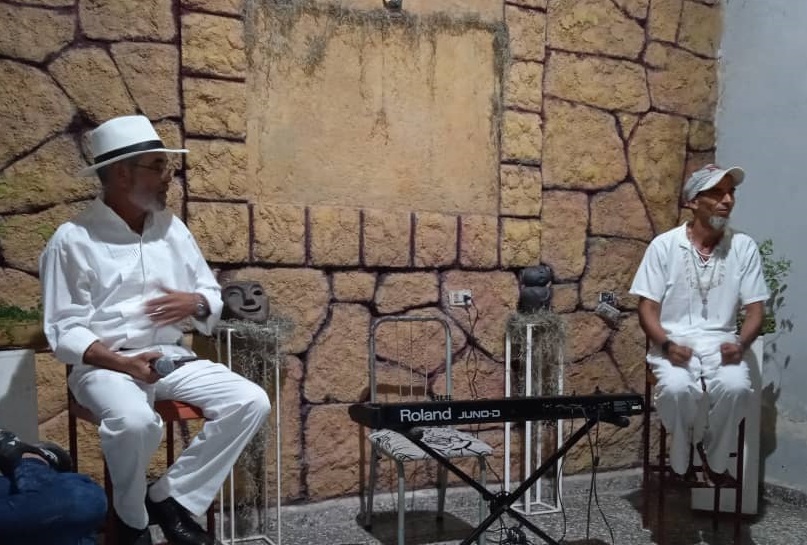
El tercer deseo, by Yuslenis Molina, (literature and music); Trova sin traba, by Oberto Calderón, (music); De qué callada manera and Desde el verso a la estrella, with Marina de Lourdes Jacobo, (literature); Alrededor del aforo, by Alberto Carlos Estrada, (performing arts criticism); Peña de Olimpo, by Ramón Leyva Pérez, (rock); La música de todos, by the music branch of the Union of Writers and Artists of Cuba (UNEAC, music); Tardes de concierto, by Carmen Rosa Núñez Daumy, (music); Café palabras, by Lesbia de la Fe, (oral narration). All of these take place at UNEAC.
There is also Vibra, by Wilner Rondón Peña, (bohemian encounter) and De arpeggios y palabras, by Argel Fernández, (literature and music); both based at the Nicolás Guillén Foundation. Finally, Vuelvo al canto y al sol, Argel Fernández and Julián Tamayo, (décima) and Café ConVerso, (poetry), both based at the Casa Iberoamericana de la Décima.
Being a writer, I am going to focus more on literature than on the other arts. What is so special about these spaces? First of all: quality. The concert music, trova, narrative, and poetry that are being developed in these venues are at a level of excellence and are different from those I have been able to witness in other provinces. Writers from Las Tunas, in their vast majority, have not been influenced by the so-called "literary fashions" of other writers, or provinces such as Holguín, Santiago, and Havana.
Literature in Las Tunas has a well-differentiated style, both in narrative and poetry. The writers, without falling into generalities, I think that thanks to the system of Clubs in the province, show great camaraderie and interact with all kinds of artists. Yes, they may not be published in books, magazines, or anthologies (not as much as they would like); but, by participating in so many oral spaces, they are forced, at least, to write a monthly text. Even if they are not officially invited, they can read as well. This, in turn, works as a healthy competition from which they all benefit and helps them to grow.
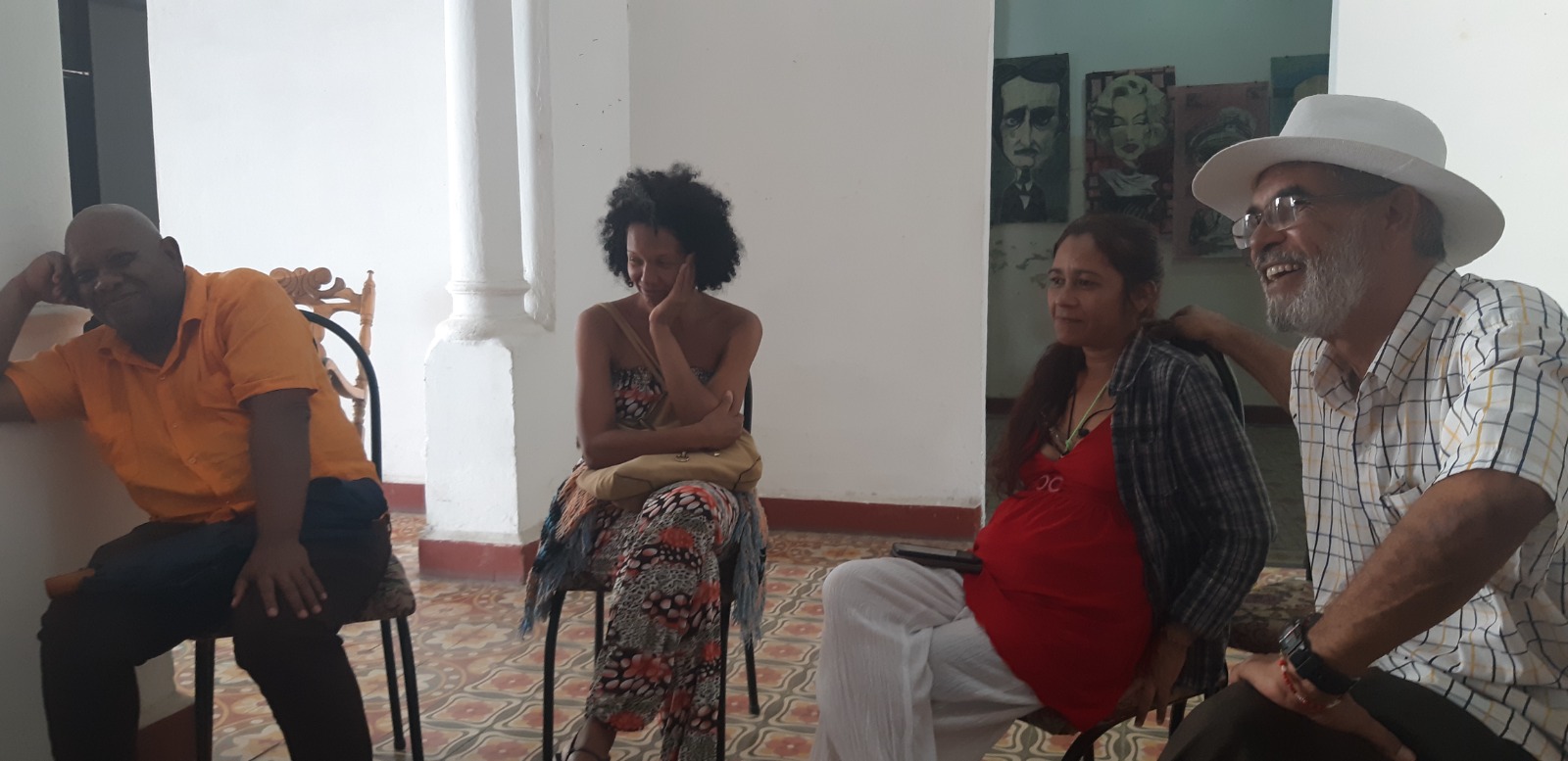
Versatility also sets them apart. As evidenced above, each Club has a specific venue and artistic expression. However, nothing is static or square. In each trova space, there is usually at least one writer, and vice versa. This Clubs can have more than two artistic manifestations and do not necessarily have to be held indoors. Some are itinerant or in the street so the audience are the passers-by of the city. Among the usual sites of these peripli are schools and parks, for example.
Something that also surprised me: the participation and punctuality of the public, and in a very pleasant way! That was arriving in Las Tunas and at each Club, I often found more than a dozen people at all times. In many of them, after concluding, the spectators became participants. These Clubs are like living organisms, evolving, adapting to the day, place, and those who enjoy the occasion.
If we look at the list I shared with you, we can notice their variety. For example, the literary ones, even if they are poetry, narrative, critical or mixed, none of them lacks music. In the music ones, although trova predominates, we can also find classical music, rock, bolero, song, and choral singing, but to a lesser extent. In several of them, poets and artists of the city are invited. In addition, in general, each one is thematic.
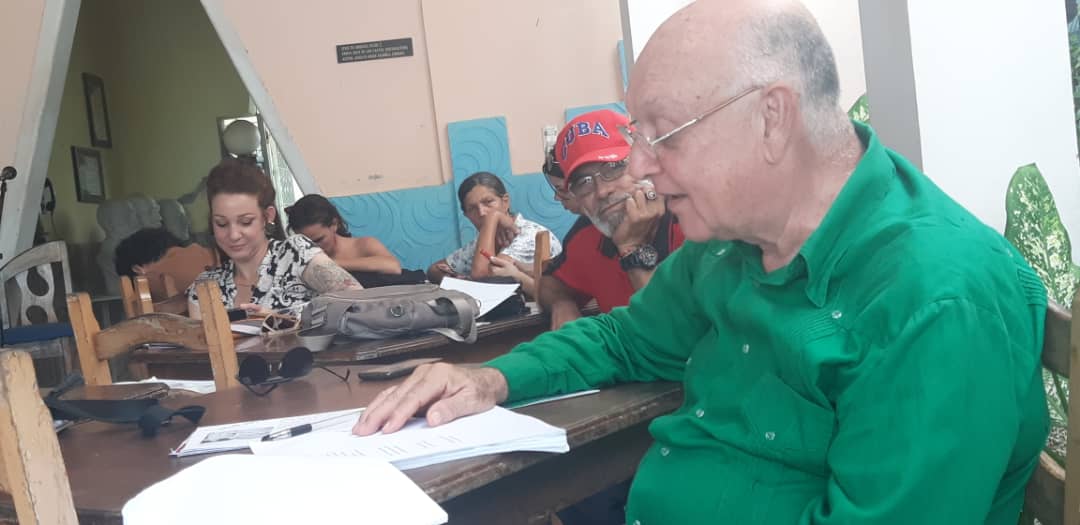
Something that the people from Las Tunas are proud of is being Cubans, of our culture. The tenth, a patrimonial element, is defended here tooth and nail. The El Cucalambé Ibero-American House of the Décima and the Cucalambeana Fiesta belong to this land, as well as many of the greatest exponents of such a beautiful poetic form.
However, not everything is rosy. It would be unfair if I omit that, as in all of Cuba, some details cloud so much artistic wonder and it would be painful if they were not corrected. Let's talk, for example, also about variety. Yes. As we said in general, the Clubs enjoy great variety. However, it is not enough and could be better. A good number of them repeat the scheme: poet, troubadour, poet, troubadour (and the moderator calling the guest on duty). In many cases, the audience and guests are recycled. The worst thing is when a writer reads the same text in four different Clubs. In the musicals, it happens almost more of the same, only without so much or no literature. In several of them, the same musicians play the same songs.
As for the literary spaces, it is worth noting that more than 90 percent are about poetry. The narrative is the great absentee and not for lack of narrators. Just as music has to be of different genres and formats, literary clubs should cover all specialties, including criticism and essays. In the music events, the great majority are of trova. It is sad to see how Las Tunas has Olimpo, one of the best rock bands in the country, and it can only play once every two months; that is if there is a budget. The territory has jazz and popular music ensembles, a symphonic orchestra, a chamber orchestra, concert performers, rappers, and son groups...
However, something more disturbing affects the quality of many clubs. I am not referring to the texts or songs presented but to the lack of professionalism of some hosts. I have attended somewhere the latter stops the program to make a "ponina" to buy rum, or they do not have an established script and perform it "with those who attend and whatever comes out". Others take advantage of the space to enhance their ego... a cult to the "I."
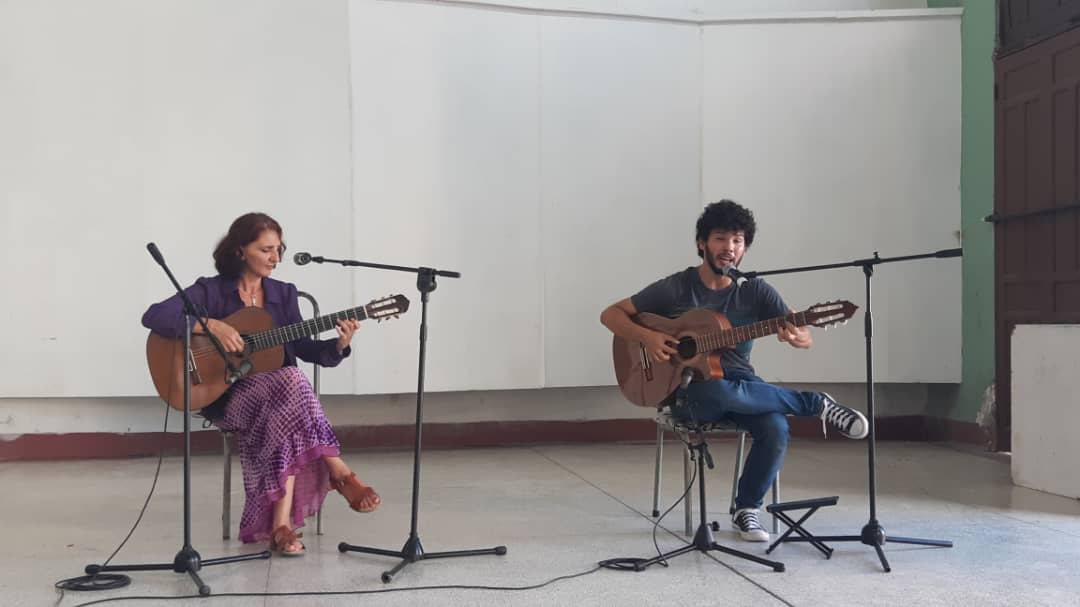
Some do not have a good command of the proposal or delay the beginning by waiting for someone specific, who has nothing to do with the activity. Even, they do not prepare correctly to perform the cultural action, or they do not dress properly and professionally and take their space as a discharge in the park. Perhaps this is the worst of all, as these are unprofessional and disrespectful attitudes toward the public. Fortunately, these cases are very isolated.
Something that also affects greatly is the lack or inefficiency in the promotion. Many of the good slots are sometimes done with guests and a couple of people who heard about it. The vast majority of promotions are done one or two days in advance.
It is also the case that they announce it a month before and do not do it again until a date is too close. Many clubs do not have an image or promotional campaign designed to break the bubble of Facebook's algorithms. This is another detail: pages or profiles on social networks dedicated to it are almost nonexistent.
Another promotion issue is that there are no communication strategies to reach out to the peripheries or outside the municipality. Writers, for example, from a locality that is not the capital, are unaware of the existence of such invitations or are not called to participate; and vice versa. Las Tunas should function as a single province and not as small areas of activity, demarcated by municipal boundaries.
The promotional work must be constant, planned, original, periodic, before, during, and after the activity. A case of promotional success is Jesús Ricardo Pérez Cecilia, with his Club Luna Creciente... don't you know what day is the next one?
I have also seen a lot of wasted space. Here there is an endless number of magnificent venues and sites for various activities and they are not being used or are underutilized. I am referring, for example, to the museums, the Blanquita Becerra hall, the Casa de la Música courtyard, the Uneac courtyard, the Nicolás Guillén Foundation areas, the Los Tamarindos courtyard, the art galleries and, above all, the wide perimeter of the Fair. The abandonment of this last facility is a crime. These locations should be revitalized with artistic proposals. Some of them are remembered as places of great public affluence in the past.
Many of the clubs -as has already been made clear- due to lack of variety, promotion, quality, or some other cause, usually have very few audiences. Some of these spaces, sometimes, are carried out with two or three people, at the most. And it is not an isolated event, but something reiterative in each appointment. We are talking about a budget allocated to these spaces that, if they do not manage to attract the necessary public to promote our culture, in my opinion, they have no reason to exist.
There is a point that touches both artists and institutions and it is the neglect of the country's cultural heritage. Artists dedicated to manifestations that are part of Cuba's cultural heritage should present projects that promote our identity. I have been able to verify that the workshops and Clubs of repentismo and décima are fewer and fewer. The activities of the Casa Iberoamericana de la Décima do not cover all the potential of the province, the undisputed leader in this poetic form.
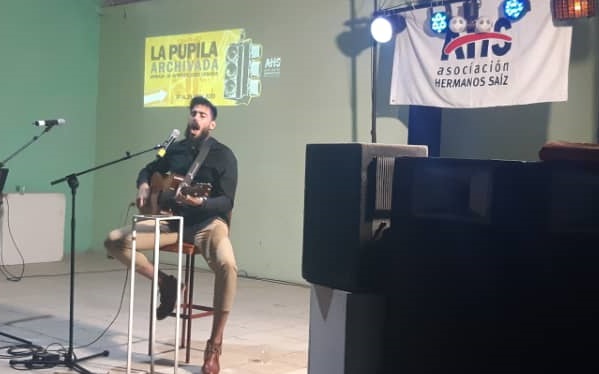
The same happens with soneros and concert musicians. On the other hand, there are the institutions. Every year they lower their budgets and some of the clubs see their proposals, offers, number of guests, and frequency diminished. Several have been canceled.
A clear example of this is the Club Vuelvo al canto y al sol, of Argel Fernández, dedicated to the décima. The budget has suffered so many reductions that they currently only have a few chairs and are expecting that at any moment they will be deprived of what little is left of their allocation.
The club of the rock band Olimpo can only be held once every two months because the budget "is not enough". This space is not only the only one of its kind in the province, but it is also a luxury opportunity to listen to one of the best bands in the nation.
Cuban institutions, not only the artistic ones, must protect and defend our cultural heritage. You cannot do more with less. You cannot raise the quality of art by decreasing the budget. The salaries of artists and the allocation of activities should always increase, not decrease. If the budget for cultural proposals continues to be reduced, it will be Cuban culture that will suffer the most.
Regardless of the problems, this territory continues to be the paradise of the clubs, workshops, and cultural spaces in the country. People from Las Tunas know it. Perhaps part of the responsibility lies with instances such as the houses of culture, the AHS, and the UNEAC. In Las Tunas these institutions enjoy a great number of activities and their operation is almost 24 hours a day, during the week.
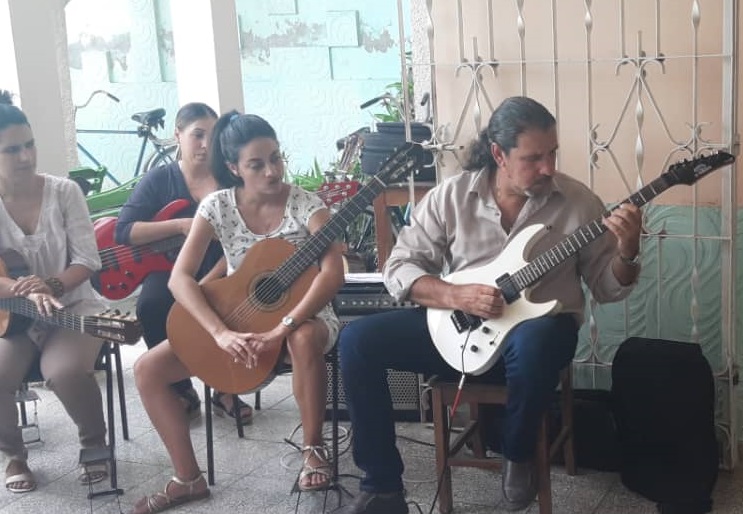
In pointing out these problems, I do so in the hope that the good work done so far will be maintained and improved. The dream is that they reach the full artistic potential of which they are capable and become a national benchmark for what is well done.
They must continue the work and go further. Something that I find wonderful is the interaction of the young artists with the established ones, both in clubs and in everyday life. It is impressive how those of both generations invite each other to their spaces, as a sign of recognition and respect for the work and the artist. Moreover, they do it with pleasure. It is very common to see in the city of Las Tunas renowned creators, in constant exchange with those who are still making themselves known.
This is something they should encourage more in the future. The possibility of improvement is in their hands. They must tear down that fence that separates the newcomers from the established, the AHS from the UNEAC.
The collaboration between both organizations must be increased and this division must be removed. If these exclusionary rules were eliminated, the link would increase and the artistic quality of the members of both institutions would be constantly on the rise. Don't be fooled, the established ones can also learn from the young ones. Although the most common thing is the other way around, it is a fact that we can see almost daily in this welcoming city.
Perhaps people from Las Tunas see this as something normal every day, nothing extraordinary. But, for those who see it from the outside, they are amazed. Maybe, by having such an artistic movement, a paradise of clubs, these privileges, they have adapted to the fact that it works, that the show never stops, although sometimes it should take a break and rethink itself.
That is the reason for naming the spots I listed above; small spots of an immense and powerful sun that illuminates the Balcón del Oriente Cubano, like an eternal lighthouse that shows the rest of the island the way to follow.





